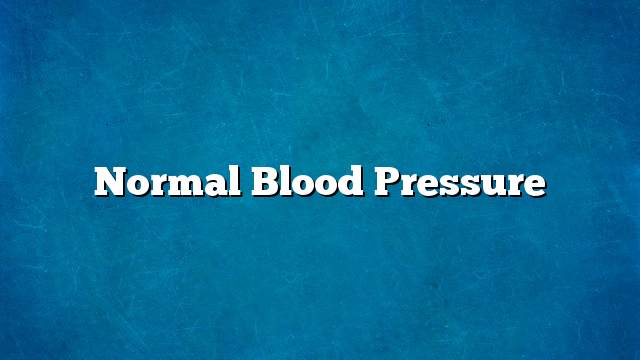blood pressure
Blood pressure (blood pressure) is the force that drives blood inside the walls of blood vessels and is transmitted through it through nutrition to all tissues and organs of the body (circulation), as this cycle begins with myocardial contraction of the heart to pay all the contents of blood to the aorta, The largest arteries in the human body, and from this artery to the rest of the arteries in the body, and then the process of the expansion of the heart muscle to fill the heart with blood again and then contractions, pushing blood to the arteries and so on.
Medical statistics indicate the importance of maintaining blood pressure at an average level of 115/75 mm Hg. This is the normal mean of blood pressure, and the increase in it results in stress of the heart and kidney or in the case of excessive pressure may lead to infertility in men or Lead to a stroke.
The aorta has a high elasticity. When the blood flows from the side of the heart, this pressure causes a strong pressure on the wall of the artery, which leads to expansion in its sides. During the cardiac prolapse, the artery returns to the normal position, pushing the blood inside it to push it to make the blood during the incontinence. This is called diastolic pressure, and in the case of contractions, it is called systolic pressure. The diastolic pressure is usually less than the systolic pressure. When the pressure level is read, 80) so the High value is systolic pressure and diastolic pressure is minimal.
Normal measurement of pressure
Blood pressure is measured in milliliters of mercury by means of a device called the electronic blood pressure meter at home and at the hospital or in the doctor’s “mercury pressure device” and its vision is more accurate than the electronic. In the case of human relaxation and relaxation, the normal measurement of systolic pressure in the adult man ranges from (90 – 14) mmHg and diastolic pressure in the same case is between (60 – 9) mmHg, indicating that the mean in the pressure of the systolic rate is (120) mmHg, and in diastolic be (80) mmHg, Stress in adults can be classified as follows:
- The normal level of systolic pressure is less than (120) and the diastolic is less than 80.
- Pre-systolic level Systolic pressure is between 120-139 and diastolic between 80-89.
- The first stage of increased pressure (mean intensity) is systolic pressure (140-159) and diastolic (90-99).
- The second phase of the height of the pressure (severe), the systolic more than (160) and the diastolic more than (100).
